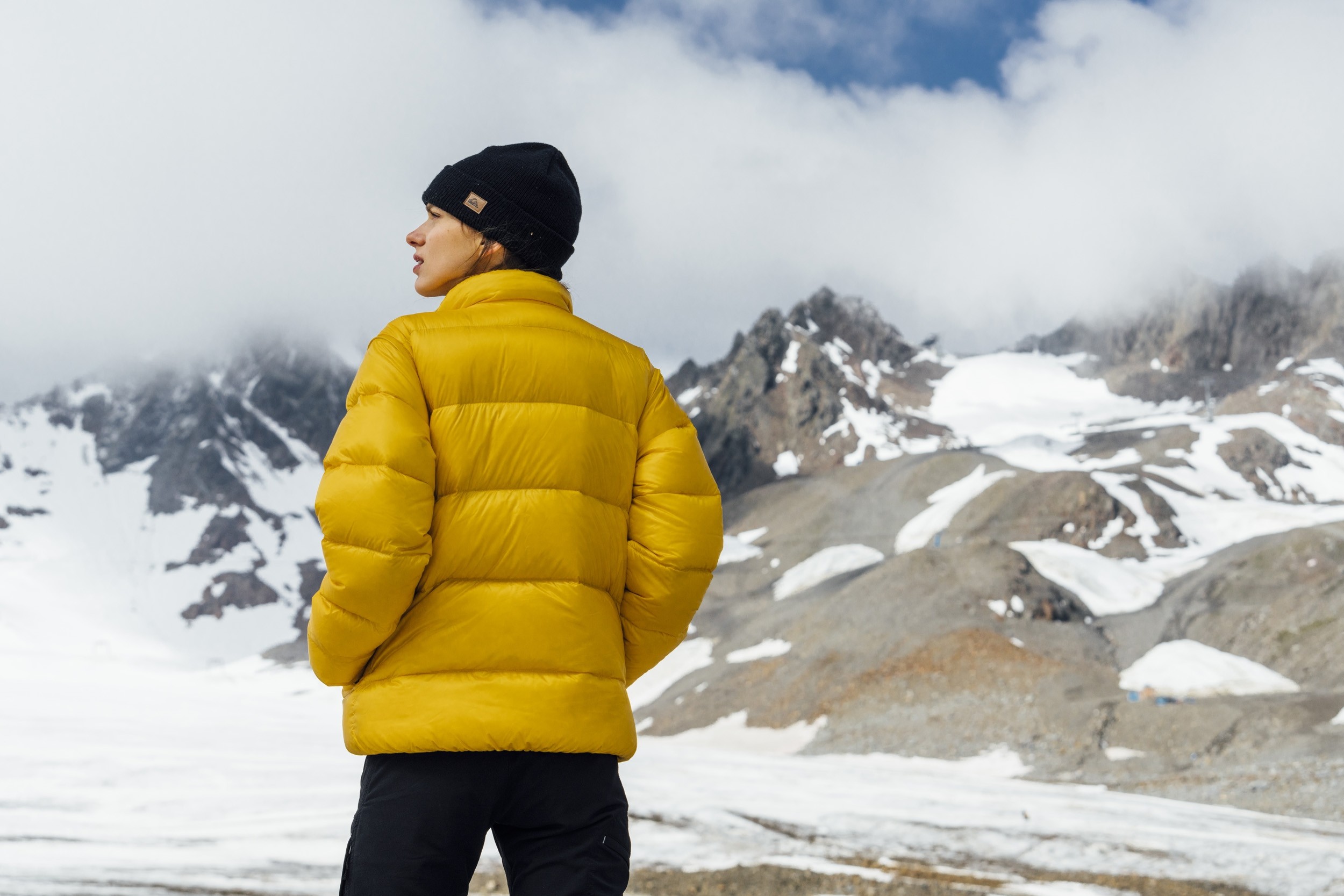
CAN A THIN DOWN JACKET BE WARM?
Don't judge a book by its cover, and don't judge a down jacket by its thickness! The days when a person in a down jacket looked like the character from the famous tire commercial and the amount of filling indicated the quality of the product are long gone. The clothing and outdoor industry has advanced so far that today's products don't have to be heavy and bulky to provide excellent warmth. On the contrary, modern down garments are lightweight, occupy minimal space in your gear, and provide exceptional insulation against the cold. Therefore, it's not always easy to tell at first glance whether a jacket will be warm! You need to dig a little deeper and rely on hard data: technical specifications.
WHAT WILL YOU LEARN FROM THIS POST?
- Why does a thin down jacket provide warmth?
- Is a thin down jacket enough for winter?
IN SHORT
The quality and level of thermal comfort provided by a down garment are not determined by its thickness. Much more important than visual impressions are the hard evidence in the form of parameters. Jackets with down fill power ranging from 750 to 900 cuin, which you can find at pajaksport.pl, are ultralight, thin, compressible, and at the same time, they handle low temperatures without any trouble!
HOW TO READ DOWN PARAMETERS?
The parameters of down filling are not magical formulas or the manufacturer's wishful thinking but rather real properties of insulation determined in rigorous laboratory tests, which directly affect the jacket's performance in field conditions. Of course, you should also consider usage patterns and individual user characteristics, but that's something everyone has to figure out on their own when choosing a down jacket.
There are quite a few parameters of down quality that specialists in this field can evaluate. However, when you're selecting a jacket for winter expeditions or everyday use, two fundamental criteria matter: the percentage ratio of down to feathers and its loft.

LOFT OF DOWN
The role of a jacket in low temperatures seems obvious: to protect against the cold. However, the jacket itself doesn't generate heat but only insulates by trapping the air warmed by your own body. To effectively fulfill this task, the jacket must be made of suitable materials and filled with... well, with what?
Goose and duck down consist of three-dimensional fibers. Thanks to their spatial structure, they can "capture" and immobilize the air warmed by the human body's energy. The more elaborate the "construction" created by the clusters, the more air the insulation will retain, resulting in greater warmth in the jacket. The loft (the ability to create such a 3D structure) of down is measured in cubic inches, abbreviated as cuin. The higher the numerical value, the greater the volume occupied by one ounce (slightly over 28 grams) of down after being uncompressed. In serious outdoor applications, products with 600 cuin or higher are considered.
Loft is significant not only for thermal comfort but also for the weight and volume of equipment. The higher.
Loft is significant not only for thermal comfort but also for the weight and volume of equipment. The higher the resilience of the insulation, the more compressible the jacket will be. Some of the warmest models can fit into their own pockets! This is the best proof that the quality of the product is not determined by its thickness and weight.
DOWN-TO-FEATHER RATIO
It is normal for light down with a spatial structure to also contain flat feathers that are more similar to our classic perception of bird feathers. Feathers are significantly weaker than down in terms of resilience and insulation properties. The less feather in the down insulation, the lighter and warmer your jacket will be. The separation of down and feather is done in special, powerful machines called "washers." The suppliers that Pajak collaborates with can achieve ratios as high as 90/10, which means up to 90% pure down and only 10% feather. Of course, theoretically, it is possible to obtain 100% down, but it would require manual separation with tweezers, like in the fairy tale of Cinderella and peas or poppy seeds and sand. Believe me, products with such filling would reach astronomical prices.
GO NATURAL DOWN!
Fact: Synthetic insulation is getting better and scientists have almost succeeded in developing a filling that would match natural down. Almost. Despite many years of attempts and efforts, most Primaloft insulation remains at the level of 600 cuin... However, synthetic down has the advantage of being less hygroscopic, so it performs better on short trips in very humid conditions.
Duck and goose down are the most commonly used types of insulation in the outdoor industry. It is worth knowing that Polski Biały Puch Gęsi (Polish White Goose Down) is highly valued by specialists and exported worldwide.

DOWN SWEATER
Thin, lightweight down jackets are sometimes referred to as "sweaters." Why? Because they can perform well in that role. If it's bitterly cold outside, a down jacket worn under a hardshell will provide you with adequate insulation against the cold, while the outer layer protects against wind and water. This combination guarantees thermal comfort even in the most challenging weather conditions.
The obvious advantage of a thin down jacket over a traditional sweater or fleece is its lightness and compressibility. Models like the fitted PHANTOM jacket or the SHADOW vest with a down fill power of around 750 cuin can fit into a tiny bag, taking up less space in your gear than a water bottle. At the same time, they provide exceptional insulation against the cold and even protect against moisture, thanks to the revolutionary ultralight TORAY Airtastic SLF15 fabric with a hydrophobic DWR coating used on their outer shell.
Do you want to experience firsthand that a warm down jacket doesn't have to be thick? Visit pajaksport.pl and choose a model for yourself. You can trust us when it comes to down!
Image source: pajaksport.pl